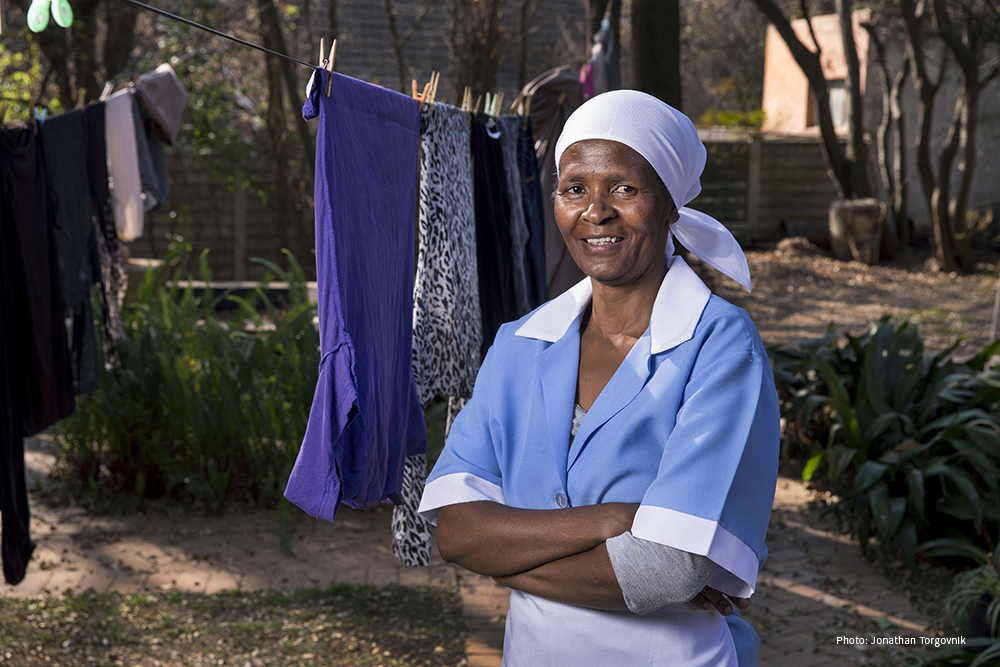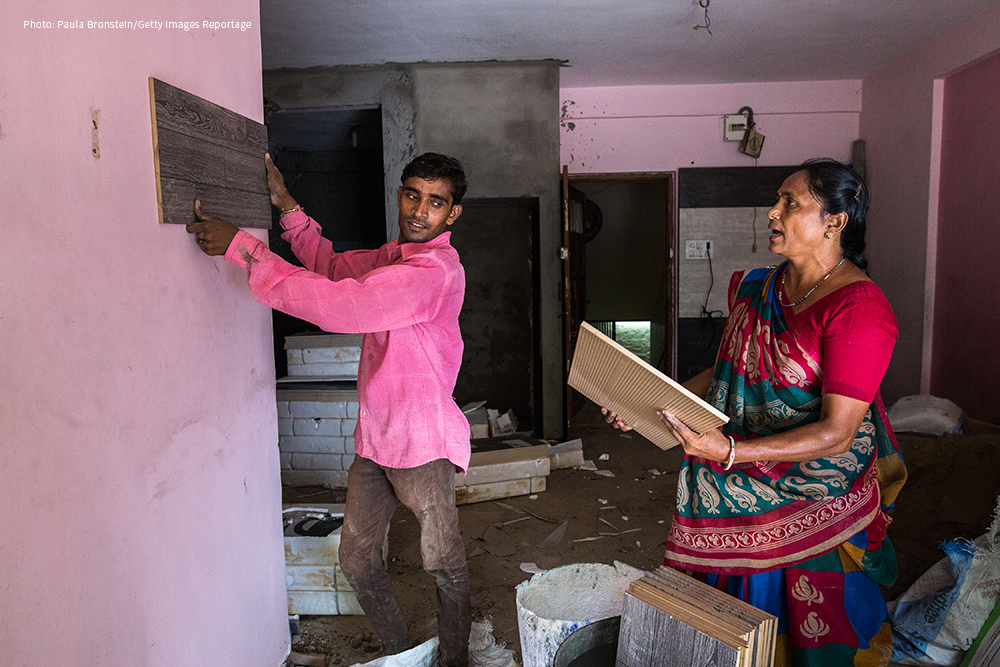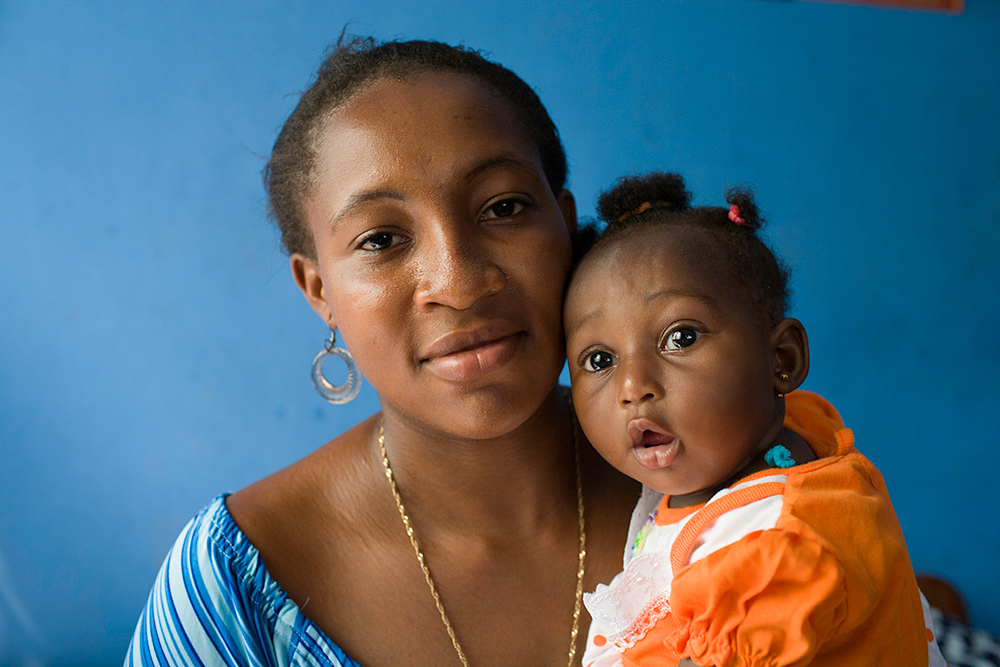Women work.
No matter where you live, the work women do reflect existing gender roles and the potential for gender equality. Today, men and women work in different jobs, for different pay, and face different tradeoffs between their work and family – differences that systematically disadvantage women. But smart policies can address these disadvantages, encourage women to deliver on – and be recognized for – their contributions as productive citizens, workers, and parents, while generating widespread and enduring social and economic benefits.
“Women’s work” has three dimensions, each of which interacts with the others: First, women concentrate in certain fields and men in others. Second, women work more but earn less than men, in part because so much of their labor is unpaid or in the informal economy. Third, women’s productive and reproductive lives are deeply enmeshed; work and childbearing pull women in different directions. Politicians, business leaders, and advocates who understand these dimensions can make changes to overcome the disadvantages that women face in their working lives.

Different jobs
Let’s start with the concentration of women in certain types of work, which economists call occupational segregation by gender. This is easy to observe: in any society, women in rural areas grow and market particular crops, while men specialize in others. In Côte d’Ivoire, for example, women grow plantains and vegetables for home consumption, whereas men grow cash crops, including coffee, cocoa and pineapple. While women in the formal economy concentrate in clerical and service positions, men are primarily found in operator, laborer, and craft work. Even within occupational categories, gender lines are sharply drawn: female teachers are more prevalent at lower levels in most education systems, and men in higher. In the home, these gendered roles continue, with women different tasks than men.
The International Labour Organisation’s (ILO) 2016 Women at Work report shows occupational segregation is one of the most persistent features of the labor market, even as economies grow and develop. World Bank economist Markus Goldstein says segregation of jobs by sex is something you see in every country of the world and “it’s not something that automatically goes away with economic growth.” Beyond strong social norms affecting the preferences of both employers and workers, the factors that drive occupational segregation are often codified in law. In 2016, for instance, the Women, Business and the Law survey found that “legal gender differences are widespread: 155 of the 173 economies covered have at least one law impeding women’s economic opportunities.”

Different pay
Occupational segregation by gender goes hand-in-hand with economic disadvantage. In virtually every society, women’s work generates less income, hour by hour, than the work men do. A 2014 study by Ariane Hegewisch and Heidi Hartmann for the Institute for Women’s Policy Research showed regardless of skill level and occupation, men’s hourly wages are higher than women’s. This phenomenon is entirely a result of gender-bias in societies’ assignment of value. There’s no particular reason nurses should be paid less than firefighters, or that someone who works with cloth should be paid less than someone who works with leather. And yet those differences exist and persist.
The biased assignment of value is clearest in care work. It’s easy to argue that the survival and nurturing of babies is the single-most important determinant of a society’s future, but that is precisely care work – women’s work the world over – that is unpaid or, when monetized in the form of outsourced childcare, very poorly paid.
Much of the work society assigns to women is unpaid domestic activities – child- and eldercare, cooking, cleaning, and gathering fuel and water. Time use studies consistently show women spend more time in unpaid activities that are crucial for family wellbeing than men do: An Action Aid summary of research reports found that “In India women spend on average 5.1 hours on housework a day, while men spend only 24 minutes. In South Africa women spend on average 3.5 hours on housework, care of persons, and community work, while men spend only 1.4 hours. In Tanzania, about 76 percent of all adult women collect water, compared with only 33 percent of men. The average time spent by women in this activity is about 30 minutes.”
Women also tend to be concentrated in the poorly paid informal economy, as domestic workers, home-based workers, street vendors, and waste pickers. According to WIEGO, a global network of informal workers, in many parts of the world an estimated one-half to three-quarters of women are informal workers, excluded from protection by labor laws, eking out a living while experiencing significant health and safety risks. The informal sector is invisible in economic statistics, and economic policies fail to take informality – and the work of women – into consideration. According to the International Labour Organisation, while labor market surveys of developing countries capture about 75 percent of men’s economic activity, they reflect no more than 30 percent of women’s.

Work and childbearing
Any exploration of women’s economic opportunities and constraints is incomplete without understanding the choices women have – or lack – about whether and when to have children. Pregnancy, childbirth, and care for young children play a huge role in women’s work lives. For an individual woman, a pregnancy – or even the anticipation of a pregnancy – can dramatically alter her job prospects, both because employers may discriminate against her and because of the time away from the workplace. Views about the appropriateness of some types of work and not others are shaped by social norms about women’s roles as mothers. When women have greater control over childbearing because they have access to effective forms of birth control and safe, legal abortion, they simultaneously gain greater opportunities for economic advancement. This represents a central priority for the more than 200 million women around the world who do not have access to the birth control they need.

What can be done?
Empowerment connotes the ability of women (and men) to actively choose where to put their productive time and energy – rather than to be pigeonholed into a particular path. This means leaders in politics, businesses, and advocacy communities need to reduce occupational segregation by gender, tackle gender-based bias in wages, and ensure that women have the ability to control childbearing.
On the policy front: eliminate laws that codify gender bias in employment, recognize unpaid and informal work within measures of national productivity, extend legal protections to informal workers, and provide public subsidies for access to family planning services, childcare and paid family leave. This is a big agenda, but an essential one for countries seeking an economic growth path that does not marginalize women further.
Simultaneously, there is much work to do to advance social norms around gender equality, and to encourage women to enter non-traditional (and more remunerative) occupations. Recent World Bank studies have shown that young women are more likely to enter male-dominated occupations if they have information about how much more they could earn, and they have had a male role model, such as a father, encouraging non-traditional pursuits. Through intentional efforts to break gender-based stereotypes in classroom settings and the media, inspirational messages from political and cultural leaders, and awareness-raising within communities about the importance of giving daughters the same chances as sons, social progress can (and must) accompany policy changes toward women’s economic empowerment.
These are mutually reinforcing steps to improve policies and social norms, constituting one of the most exciting and promising agendas for social and economic transformation in the coming years.
Ruth Levine is the director of the William and Flora Hewlett Foundation’s Global Development and Population Program which makes grants to expand women’s reproductive and economic choices, amplify citizen participation, and improve policymaking through evidence.
